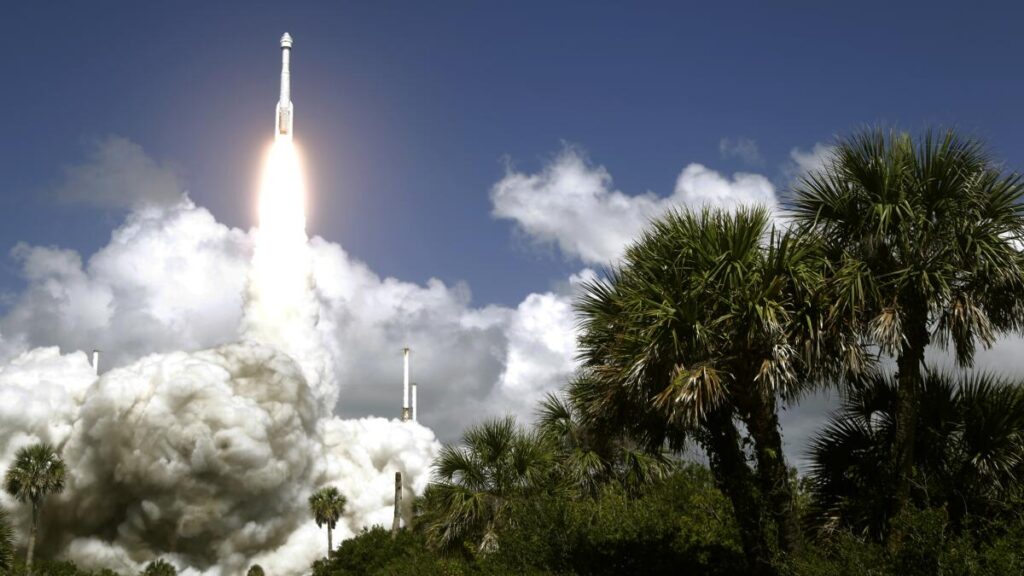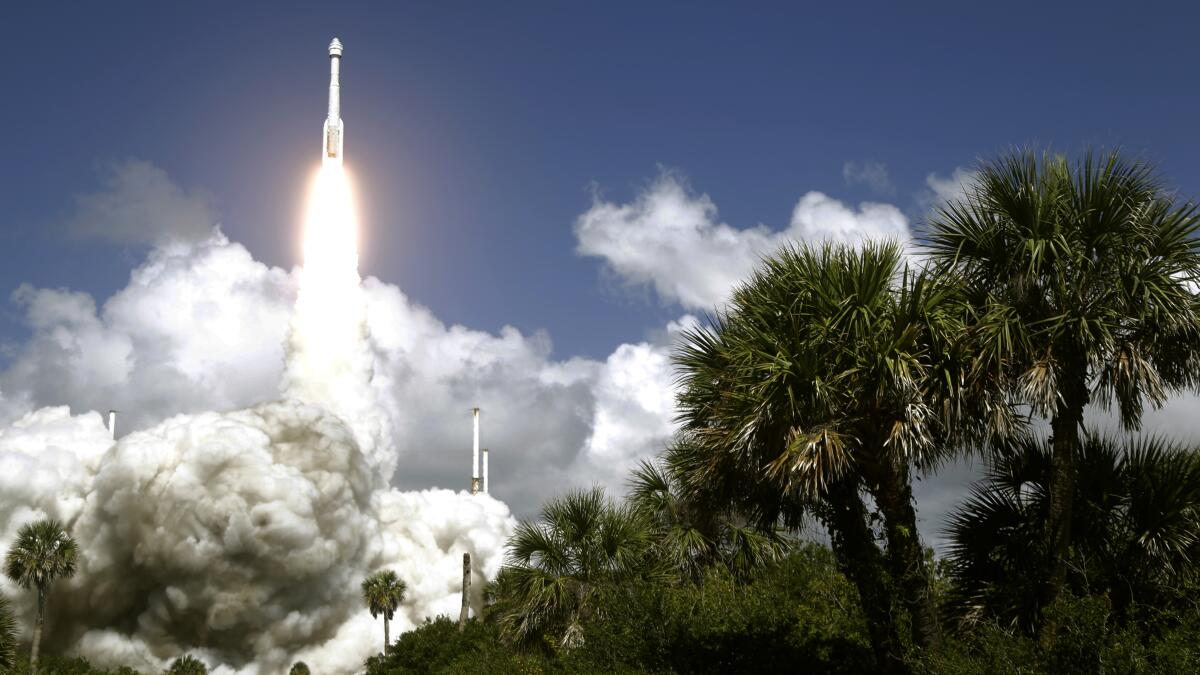Boeing Starliner, NASA astronauts, space launch, International Space Station, Atlas V rocket, commercial crew program, SpaceX, crewed spaceflight, Barry Wilmore, Sunita Williams
“Boeing’s Starliner capsule achieved a historic milestone by launching NASA astronauts Barry Wilmore and Sunita Williams into space for the first time. The successful mission marks a crucial step in the Commercial Crew Program, positioning Boeing alongside SpaceX as a key player in crewed spaceflight. Discover the journey, challenges, and future prospects of this groundbreaking mission.”

The Boeing Starliner capsule finally achieved a significant milestone on Wednesday by launching astronauts into space for the first time. This event marks a crucial moment for both Boeing and NASA as it initiates a high-stakes test flight to the International Space Station (ISS), a mission long anticipated after numerous delays and technical issues.
The Launch Event
The Starliner capsule was successfully launched at 10:52 a.m. ET from Florida’s Cape Canaveral Space Force Station. The spacecraft rode into orbit on an Atlas V rocket, a powerful launch vehicle developed by the United Launch Alliance (ULA), a joint venture between Boeing and Lockheed Martin. The mission’s success represents a pivotal step in Boeing’s efforts to establish itself as a reliable provider of crewed spaceflight services.
The Crew
On board the Starliner were veteran NASA astronauts Barry “Butch” Wilmore and Sunita Williams. Their mission entails a roughly 24-hour journey to the ISS, where they are scheduled to dock at 12:15 p.m. ET the following day. Both Wilmore and Williams bring extensive experience to the mission, adding a layer of confidence in the successful execution of the flight.
Overcoming Delays and Technical Challenges
The road to this launch was far from smooth. The Starliner program has faced years of delays and numerous technical glitches. The most recent setback occurred on Saturday, just minutes before a scheduled launch, due to an issue detected with a valve in the Atlas V rocket. Prior to this, a similar attempt on May 6 was also aborted. Additionally, a separate helium leak in the Starliner’s propulsion system caused further delays, underscoring the complex and often unpredictable nature of space travel.
The Race with SpaceX
Boeing’s entry into crewed spaceflight comes at a time when SpaceX has already established a strong foothold in this domain. Elon Musk’s company has been flying NASA astronauts to the ISS aboard its Crew Dragon capsule since 2020. If Boeing’s current mission proves successful through to its conclusion, it could position Boeing as a formidable competitor to SpaceX, offering NASA a second viable option for transporting astronauts to and from the ISS.
NASA’s Commercial Crew Program
Both Boeing and SpaceX’s developments are part of NASA’s Commercial Crew Program, an initiative launched over a decade ago. The program aims to foster private sector involvement in space exploration, specifically focusing on developing spacecraft capable of carrying astronauts to low-Earth orbit. This initiative followed the retirement of NASA’s space shuttles, which left the agency reliant on Russian Soyuz spacecraft for transporting astronauts.
Significance of the Mission
The success of this mission is vital for Boeing. It not only validates the company’s efforts and investments in the Starliner program but also reinforces NASA’s strategy of leveraging commercial partnerships to advance its space exploration goals. The ability to choose between multiple providers for astronaut transport enhances NASA’s operational flexibility and reduces dependency on a single contractor.
Future Prospects
Should the Starliner mission proceed as planned, Boeing will likely proceed with regular missions to the ISS, similar to SpaceX’s current operations. This scenario would mark a significant expansion in the commercial spaceflight sector, offering more opportunities for scientific research and international collaboration in space. Moreover, the availability of multiple spacecraft options could lead to cost efficiencies and increased innovation within the industry.
Conclusion
The successful launch of Boeing’s Starliner capsule with astronauts aboard is a monumental achievement, reflecting years of perseverance and technological advancement. As the spacecraft continues its journey to the ISS, the space community watches with anticipation. This mission not only represents a victory for Boeing but also a broader triumph for the collaborative efforts between NASA and private industry. If all goes well, Boeing will join SpaceX in ushering a new era of commercial spaceflight, offering NASA and other space agencies enhanced capabilities to explore and utilize low-Earth orbit.
Read More-
